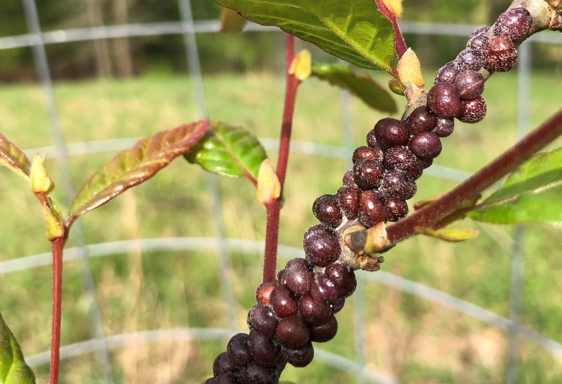Landscaping

Lecanium scale is an insect found on many shrubs and trees. There are several common species. The adults lay eggs beneath their bodies in the spring. When they hatch the tiny immature nymphs, or ‘crawlers’, will move to different parts of the plant and begin feeding. Scale have a needle-like mouth part that they use to suck the juices from the plant. A heavy infestation of scale insects can result in poor plant growth, especially on young plants. If these insects have caused issues before, the chances are that they will be back to feed on shrubs and trees. A careful inspection will help homeowners determine which plants need some type of scale management plan.
Result of Lecanium Scale
If these insects disrupting the plants’ growth is not bad enough, the scale insects also produce honeydew. The honeydew is a sticky substance secreted from the scale insect. The sticky honeydew will land on other plants, cars, toys, yard furniture, and other surfaces, and then sooty mold will begin to grow.
Sooty mold is a black colored fungus that grows on honeydew. Oftentimes, someone will try to clean the sooty mold without knowing that the scale insect, or possibly another common insect pest called aphids, are causing the problem. The sooty mold can be cleaned, but it will come back as long as these sucking insects are feeding nearby.
Treatment
If shrubs and trees in a yard have problems with lecanium scale, there are treatments available. If homeowners find these insects during the dormant season, January may be a good time to use dormant oils. Dormant oil is easy to find and does a great job in managing scale at that time of year.
If lecanium scale is found outside of the dormant season, wait until the eggs hatch into nymphs and use horticultural oil. It would be pointless to spray the large bodied scale in March and April. Eggs will be laid under their hardened bodies and insecticides will not work at that time.

